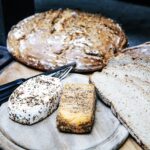
German bread is renowned worldwide for its unparalleled quality, diverse flavors, and rich cultural heritage. Baking bread in Germany is considered an art form, and the country boasts an impressive variety of bread types, each with its own unique characteristics. In this article, we will explore the fascinating world of German bread, its history, popular varieties, and the secrets behind its enduring popularity.
- The History of German Bread: German bread has a storied history dating back centuries. Ancient Roman influences, medieval monastic traditions, and regional customs have all contributed to shaping Germany’s bread culture. The meticulous craftsmanship and dedication to using high-quality ingredients have been passed down through generations, resulting in the exceptional bread we know today.
- Traditional German Bread Varieties:
2.1. Vollkornbrot: Vollkornbrot, or whole grain bread, is a cornerstone of German bread culture. Made from finely ground whole grains, this hearty bread is dense, nutty, and packed with fiber. It often features seeds, such as sunflower, pumpkin, or flaxseeds, adding a delightful crunch to every bite.
2.2. Roggenbrot: Roggenbrot, or rye bread, is another beloved German classic. Dark, robust, and slightly tangy, this bread is primarily made from rye flour and sourdough. Its distinct flavor and dense texture make it a popular choice for sandwiches or served alongside hearty stews and sausages.
2.3. Laugenbrot: Laugenbrot, known for its soft, chewy interior and golden-brown pretzel-like crust, is a true German treat. The dough is first dipped in a lye solution before baking, resulting in its characteristic flavor and appearance. Laugenbrot is often enjoyed on its own or sliced and filled with various toppings.
- Unique Baking Techniques: German bread owes its exceptional quality to meticulous baking techniques and time-honored traditions. From carefully nurturing sourdough starters to long fermentation periods, the process ensures the development of complex flavors and excellent texture. Additionally, the use of high-quality, locally sourced ingredients like stone-ground flour and natural grains enhances the overall taste and nutritional value.
- Regional Bread Specialties: Germany’s diverse regions offer a plethora of unique bread specialties.
4.1. Schwarzbrot: Schwarzbrot, a dark bread popular in northern Germany, is typically made with a blend of rye and wheat flours. Its robust flavor and dense crumb make it a staple for open-faced sandwiches topped with various savory ingredients.
4.2. Swabian Bread: Hailing from the Swabian region in southwestern Germany, Swabian bread is characterized by its airy texture and mild flavor. Traditionally baked in round loaves with a cross-shaped slash on top, it pairs well with cold cuts and spreads.
- Where to Find Authentic German Bread: In Germany, artisan bakeries are abundant, and local markets often showcase a wide array of freshly baked bread. For those outside of Germany, specialty stores and online retailers offer the opportunity to experience the taste of authentic German bread. Recipes and baking techniques can also be found online, allowing bread enthusiasts to try their hand at creating traditional German loaves at home.
German bread stands as a testament to the country’s rich culinary heritage, with its countless varieties and traditional baking techniques. Whether you’re savoring a slice of Vollkornbrot or indulging in the unique flavors of Laugenbrot, German bread offers a delightful experience for bread lovers worldwide. Embrace this cultural treasure and embark on a journey to discover the artistry and irresistible flavors of German bread.

